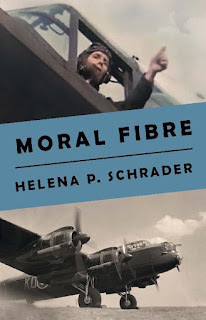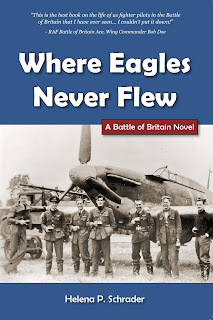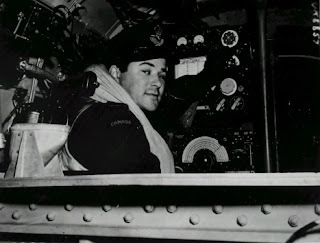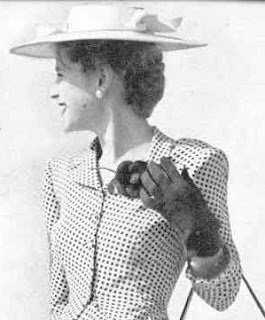Helena P. Schrader's Blog, page 20
June 14, 2022
DISSECTION OF A NOVEL - DESCRIPTION
Description is the mortar that holds a book together.
Without it characters would exist in an empty, featureless world and action would take place in black hole. The best plot and the most appealing characters can be lost in bad descriptions -- or the complete absence of them.
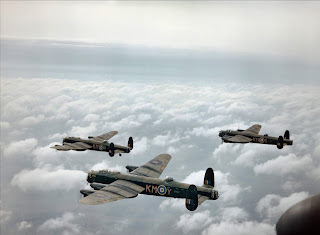
Before an author can describe anything, of course, they have to be able to picture it themselves! So the first step to getting a description right is learning about the environment of the novel. That is one of the reasons I make an effort to visit the principle venues of my books -- from Jerusalem to Sparta. Yet while travel is good for getting the physical environment right -- the climate, the vegetation, the landscape etc., many components necessary for setting the stage of a novel are ephemeral and transient. This is most obvious in the case of novels set in the distant past where everything from the domestic architecture to the clothes and music have been lost. Yet, to a lesser extent, it is true even when writing about the more recent past. The Second World War may not seen all that long ago (at least to those in my generation), yet a tremendous amount has changed since it ended. Fortunately, one of my test readers is older than I am and tipped me off that I had not succeeded in capturing the atmosphere of wartime Britain in my first draft. I went back and did more research. This entailed reading diaries, memoirs, letters and good social history stuffed with examples, photos, and statistics. Once immersed in an era and comfortable with what I want to describe, the challenge becomes highlighting those aspects of a scene that can help the reader visualize the world of the novel -- without boring him. As always, getting the facts straight is not enough to evoke an image for the reader. Indeed, a meticulous listing of essential facts is far more likely to bore the reader and make their eyes cross than help them to see something. Here's what I mean. I could say: The Lancaster was a 69 feet 4 inches long, 20 feet 6 inches high and had a wingspan of 102 feet for a wing area of 1,297 feet. It weighed 36,900 lbs and could carry a bomb load of 12,000 lbs without modification. It had four Rolls-Royce Merlin engines with 1,280 hp each. or
The Lancaster sat nose-in-the-air with its double-finned tail low to the ground and its hundred-feet wingspan stretching grandly to either side. The fighters were toys compared to this. Kit liked to think of the Lancaster as a four-horse chariot from which they hurled death like a modern-day Hector battling the arrogant, invading Achilles.
Or here's another example.
The aircraft took off after dark. All were painted a mat-black and the flare path was dim so it was hard to see. The Lancasters lined up on the taxiway, then turned one after another onto the runway. Kit stood with the other spectators and watched. When an aircraft was cleared for take-off, the caravan beside the runway flashed a green light. The aircraft at the head accelerated, passed the crowd of people watching, and gained speed until it had sufficient lift for take off. Once airborne, it climbed slowly because they were very heavy.
Or:
A-Able turned onto the runway. The rotating blades of the four propellers caught the light from the flare path and formed ethereal silver disks in the darkness. Otherwise, the aircraft blended into the night. Painted a mat black, the hulking dark shape hung suspended between a pair of navigation lights, one on the tip of each nearly invisible wing. A tiny greenhouse lit by eerie bluish lights floated above yet astride the barely perceptible fuselage. Inside this tiny glass structure, dark shapes moved.
To Kit's left a green light appeared. The earth beneath his feet started to vibrate as the engines changed their tone from a low growl to a high-pitched roar. The black thing started rolling towards them; the eerie lighting grew larger and the shapes inside became human heads.
The massive machine rushed toward the cluster of spectators, gaining speed. Then the great winged monster whisked past and raced away into the darkness stretching to the left. The glass bubble of the mid-upper turret crouched upon its long, black back like a jockey on a massive charger. The flare path lights flashed off the Perspex of the rear turret.
A-Able’s nose lifted and seemed to drag the great bulk of the aircraft after it. It hung faintly silhouetted against the night sky. The wheels folded into the body, like a bird tucking in its feet. Abruptly the navigation lights darkened. The next aircraft, U-Uncle, turned onto the head of the runway.
Finally, a last example of a more domestic setting:
The WAAF officer was five feet four tall and weighed 120 lbs. She was 26 years old. She had dark eyes and hair, which she wore rolled into a hair net to keep it off her neck. She wore red lipstick and nail polish, although neither was allowed in the WAAF.
or:
A moment later a WAAF officer walked into the parlour, tearing off her cap and hair net in a single motion. She shook her head to let her long dark hair fall lose. Georgina confronted a strikingly beautiful young woman with a full but graceful figure and straight dark eyebrows over large, dark eyes. Her lipstick was perfect, and her nail polish red. Georgina thought she’d heard that WAAF weren’t supposed to wear either, but as this young woman came across the room with her hand extended, Georgina sensed she was the kind of woman used to privileges.
Next week I will explore the challenge of dialogue in a unique culture -- the RAF.
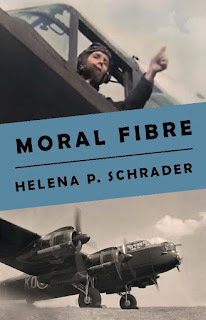
Riding the icy, moonlit sky— They took the war to Hitler.
Their chances of survival were less than fifty percent. Their average age was 21.
This is the story of just one Lancaster skipper, his crew,and the woman he loved.
It is intended as a tribute to them all.
Flying Officer Kit Moran has earned his pilot’s wings, but the greatest challenges still lie ahead: crewing up and returning to operations. Things aren’t made easier by the fact that while still a flight engineer, he was posted LMF (Lacking in Moral Fibre) for refusing to fly after a raid on Berlin that killed his best friend and skipper. Nor does it help that he is in love with his dead friend’s fiancé, who is not yet ready to become romantically involved again.
June 7, 2022
BLUE INK REVIEW OF "MORAL FIBRE
Blue Ink Reviews gives Moral Fibre a rare "Star"!
Below are some excerpts.
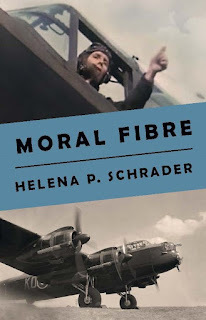
With superb plotting, Schrader focuses on Kit’s character development. Schrader initially depicts Kit as a traumatized veteran, driven to rejoin the RAF out of guilt for his skipper’s death. As Kit processes this trauma, readers watch his confidence as a bomber squadron pilot and his devotion to Georgina grow.
Meanwhile, Schrader weaves in subplots concerning Georgina, his extended family (of both African and British descent), and fellow crew members. Two particularly intriguing strands involve Georgina: her experiences teaching children evacuated from London, and her relationship with Kit’s mother, who is of Zulu heritage.
The story is well-grounded in historical research and buttressed by Shrader’s re-creation of actual battles, as well as an Historical Note and Glossary of RAF Terminology at novel’s end.
Read full review at: www.blueinkreview.com
they took the war to Hitler.
Their chances of survival were less than fifty percent.
Their average age was 21.
This is the story of just one bomber pilot, his crew and the woman he loved.
It is intended as a tribute to them all.
or Barnes and Noble.
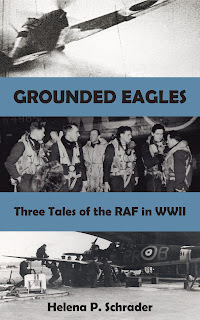 Disfiguring injuries, class prejudice and PTSD are the focus of three heart-wrenching tales set in WWII by award-winning novelist Helena P. Schrader. Find out more at: https://crossseaspress.com/grounded-eagles
Disfiguring injuries, class prejudice and PTSD are the focus of three heart-wrenching tales set in WWII by award-winning novelist Helena P. Schrader. Find out more at: https://crossseaspress.com/grounded-eagles
"Where Eagles Never Flew" was the the winner of a Hemingway Award for 20th Century Wartime Fiction and a Maincrest Media Award for Military Fiction. Find out more at: https://crossseaspress.com/where-eagles-never-flew
For more information about all my books visit: https://www.helenapschrader.com
May 31, 2022
DISSECTION OF A NOVEL - SECONDARY CHARACTERS PART II: A Woman's World
Secondary characters enrich a novel. In novels like Moral Fibre with distinctly separate plot lines, a different population of "supporting cast" inhabits each plot. While the male protagonist is surrounded primarily by his crew, the female protagonist has her family, her colleagues and the children at her school.

Unquestionably the important secondary character in the heroine's world is her father, Reverend Edwin Reddings. As an Anglican priest, a father, and a veteran of the last war, Reddings provides a mature and (usually) wise point-of-view in a world (and book) otherwise inhabited primarily by teenagers. He also has a better overview of what is happening and other unique gifts that contribute materially to the plot of the novel. But Georgina is also challenged by a class-conscious headmistress in a school which is flooded with refugee children from London's slums. Georgina is determined not to be like the bigoted headmaster -- only to encounter her own difficulties in dealing with children from backgrounds so different from her own. An important lesson is provided by "Batty," a girl who is disinterested in everything and whom all have given up on -- until her secret is revealed. Next week I will explore the challenge of describing wartime Britain and operations.

Riding the icy, moonlit sky— They took the war to Hitler.
Their chances of survival were less than fifty percent. Their average age was 21.
This is the story of just one Lancaster skipper, his crew,and the woman he loved.
It is intended as a tribute to them all.
Flying Officer Kit Moran has earned his pilot’s wings, but the greatest challenges still lie ahead: crewing up and returning to operations. Things aren’t made easier by the fact that while still a flight engineer, he was posted LMF (Lacking in Moral Fibre) for refusing to fly after a raid on Berlin that killed his best friend and skipper. Nor does it help that he is in love with his dead friend’s fiancé, who is not yet ready to become romantically involved again.
May 24, 2022
DISSECTION OF A NOVEL - SECONDARY CHARACTERS - Part I: The Crew
Few humans live in isolation, and neither do characters. Secondary characters enhance novels, particularly complex novels, by adding depth and color. Sometimes secondary characters have their own plot-lines; sometimes they simply inhabit the plot line of the central characters, adding color, texture, and added depth to the main character's actions and development.

The central character of Moral Fibre is a bomber pilot and bombers in the Second World War were manned by comparatively large crews. The B-17 had a crew of ten. The B-24 had either ten or eight men. The RAF's Lancasters and Halifaxes had crews of seven.
Unlike the USAAF, which simply assigned men to a crew, the RAF relied on an informal procedure for "crewing up." Once men had qualified sufficiently in their own particular specialty (i.e. pilot, navigator, bomb aimer etc. ) to be ready for operational training, they were sent to an Operational Training Unit where men from all the trades necessary to man a bomber collected. Here the trainees were brought together in a large hall and told to "sort themselves out." This process occurred quite early on in training, usually within the first two weeks, and it lasted until every pilot had a complete crew. Thereafter, the men trained together as a crew.
Memoirs, letters and diaries all attest to the powerful bonding that went along with serving together in the same crew. In Fighter Command, the pilots' focus was the squadron. Pilots and ground crews developed a strong identification with the unit. Socializing took place largely in the squadron or with other members of the squadron. In bomber command, the squadrons were large and evoked little loyalty. The crew, on the other hand, was everything. Yes, some crews broke up because of injuries, deaths, or incompatibility. There were instances of crews refusing to fly with a pilot, or of one member being kicked off a crew for one reason or another. But as rule, crews melded together and became an interdependent team. Not only did they fly together, they ate, drank, and played together much of the time too. Many crews kept in touch with one another after the end of the war, sometimes for decades until death separated them.
The navigator on Kit's crew, and only other commissioned officer on the crew, is Adrian Peal. The son of a wealthy and successful lawyer expected to succeed, but an artist and a dreamer at heart. He has learned to "fit in" and lose himself in a crowd, but soon realizes that with Kit he can be himself. A real friendship develops between Kit and Adrian. "Daddy" MacDonald, the Flight Engineer, is the oldest member of the crew at 35. He's worked his way up through the ranks, and he's married with two kids. He's calm, trustworthy, knows his job inside out and is a rock on which Kit can rest some of his burden. The two gunners are very young and come from poor, disadvantaged backgrounds. Frank Roper is a "bolshie" with an cheeky attitude toward authority and a cocky confidence. Nigel Osgood comes from a broken home that makes him quick-tempered and pugnacious. Nigel gets into fights, causing Kit some problems, but is tough and tenacious and overall an asset to the crew. Terry, the wireless operator, who was orphaned young, is poor-sighted and introverted, yet bright, curious, and possessing inner strength. Stuart Babcock the bomb aimer, on the other hand, comes from a good home, is rather spoiled and the least mature member of the crew. The mix of these personalities makes for a unique crew with a unique blend of strengths and weaknesses.
Next week I'll look at the secondary characters that support the heroine.

Riding the icy, moonlit sky— They took the war to Hitler.
Their chances of survival were less than fifty percent. Their average age was 21.
This is the story of just one Lancaster skipper, his crew,and the woman he loved.
It is intended as a tribute to them all.
Flying Officer Kit Moran has earned his pilot’s wings, but the greatest challenges still lie ahead: crewing up and returning to operations. Things aren’t made easier by the fact that while still a flight engineer, he was posted LMF (Lacking in Moral Fibre) for refusing to fly after a raid on Berlin that killed his best friend and skipper. Nor does it help that he is in love with his dead friend’s fiancé, who is not yet ready to become romantically involved again.
May 17, 2022
DISSECTION OF A NOVEL PART IV - THE ANTAGONISTS
Good antagonists contribute almost as much as good protagonists to a novel. In my books, the antagonists are rarely evil. That's because I don't like to dwell in evil minds and I have to be able to get inside my characters in order to write about them convincingly. Instead of evil antagonists, I seek to create characters that could just as easily be protagonists if only one chose to see the world through their eyes. In short, they are complex characters with their own strengths and weaknesses, but for one reason or another they are in conflict or competition with the protagonist of this particular novel.
In Moral Fibre there are two antagonists, one for the hero and one for the heroine.

The hero Kit Moran's antagonist is Red Forrester. Red is an Australian pilot who arrives at the same Operational Training Unit as Kit Moran at the same time. They share a room, and they soon become, well, bitter rivals. Forrester is ambitious. He wants his crew to be the best in everything -- flying, bombing, gunnery, navigation. He selects a crew of like-minded individuals, who are as aggressively competitive as he is. And when they do well at anything, they brag about it.
In the course of the novel, this sets up several situations where Moran is forced to make choices and take actions that would not otherwise have been necessary. Forrester acts as a foil to Moran. He forces Moran to re-evaluate who he is and what he wants. He is the shadow that sets Moran into greater light.
The heroine Georgina Redding's antagonist is Fiona Barker. Fiona is a fellow trainee at the teacher's college, but she is more of a rebel. She resents the restrictions placed on women. She wants to have a career. She hates men who are more focused on her looks than her brain. She is, well, the way I was when I was in college. So, you see, I identify strongly with Fiona. Yet she is Georgina's antagonist because she tries to impose her worldview on Georgina.
Fiona thinks Georgina should not get involved with Kit. She thinks she should "stand on her own two feet." She calls Georgina "dependent" and deplores her "need for a ring to make her feel whole." She fails to understand the depth of Georgina's feelings much less Georgina's great emotional strength. By highlighting Georgina's alternatives, like a good antagonist, she makes Georgina define herself more precisely and consciously choose a different course.
Next week I will explore the critical role of secondary characters.

Riding the icy, moonlit sky— They took the war to Hitler.
Their chances of survival were less than fifty percent. Their average age was 21.
This is the story of just one Lancaster skipper, his crew,and the woman he loved.
It is intended as a tribute to them all.
Flying Officer Kit Moran has earned his pilot’s wings, but the greatest challenges still lie ahead: crewing up and returning to operations. Things aren’t made easier by the fact that while still a flight engineer, he was posted LMF (Lacking in Moral Fibre) for refusing to fly after a raid on Berlin that killed his best friend and skipper. Nor does it help that he is in love with his dead friend’s fiancé, who is not yet ready to become romantically involved again.
May 10, 2022
"Some of the coolest, most courageous people..." Feathered Quill Review of "Moral Fibre"


"Kit’s struggles, his life, and the romance he is continuously hoping and striving to have with the woman he loves hits you directly in the soul, but the addition of adventure and excitement makes you want to read cover-to-cover without ever having to put the book down. After all, the RAF’s bombing offensive against Nazi Germany was one of the longest, most expensive and controversial of the Allied campaigns during the Second World War, and the contributions made by these men – and the women they had to leave behind – were more than substantial. And Ms. Schrader does a brilliant job of heralding them with every chapter.
"The intriguing dialogue, the settings, the clear descriptions of such harsh situations – this author has hit on all cylinders once again, and even provides the most exhilarating history lesson I, personally, have ever had the pleasure of reading. “5-Stars!”
Quill says: Helena Schrader’s in-depth stories, fantastic characters, and ability to write an unforgettable tale makes her one of the best authors out there!
For more information on Moral Fibre: A Bomber Pilot’s Story, please visit the author's website at: helenapschrader.com.com
For the full Feathered Quill Review go to: https://featheredquill.com/moral-fibre-a-bomber-pilots-story/

Riding the icy, moonlit sky— They took the war to Hitler.
Their chances of survival were less than fifty percent. Their average age was 21.
This is the story of just one Lancaster skipper, his crew,and the woman he loved.
It is intended as a tribute to them all.
Flying Officer Kit Moran has earned his pilot’s wings, but the greatest challenges still lie ahead: crewing up and returning to operations. Things aren’t made easier by the fact that while still a flight engineer, he was posted LMF (Lacking in Moral Fibre) for refusing to fly after a raid on Berlin that killed his best friend and skipper. Nor does it help that he is in love with his dead friend’s fiancé, who is not yet ready to become romantically involved again.
FIVE STAR FEATHERED QUILL REVIEW OF "MORAL FIBRE"


"Kit’s struggles, his life, and the romance he is continuously hoping and striving to have with the woman he loves hits you directly in the soul, but the addition of adventure and excitement makes you want to read cover-to-cover without ever having to put the book down. After all, the RAF’s bombing offensive against Nazi Germany was one of the longest, most expensive and controversial of the Allied campaigns during the Second World War, and the contributions made by these men – and the women they had to leave behind – were more than substantial. And Ms. Schrader does a brilliant job of heralding them with every chapter.
"The intriguing dialogue, the settings, the clear descriptions of such harsh situations – this author has hit on all cylinders once again, and even provides the most exhilarating history lesson I, personally, have ever had the pleasure of reading. “5-Stars!”
Quill says: Helena Schrader’s in-depth stories, fantastic characters, and ability to write an unforgettable tale makes her one of the best authors out there!
For more information on Moral Fibre: A Bomber Pilot’s Story, please visit the author's website at: helenapschrader.com.com
For the full Feathered Quill Review go to: https://featheredquill.com/moral-fibre-a-bomber-pilots-story/

Riding the icy, moonlit sky— They took the war to Hitler.
Their chances of survival were less than fifty percent. Their average age was 21.
This is the story of just one Lancaster skipper, his crew,and the woman he loved.
It is intended as a tribute to them all.
Flying Officer Kit Moran has earned his pilot’s wings, but the greatest challenges still lie ahead: crewing up and returning to operations. Things aren’t made easier by the fact that while still a flight engineer, he was posted LMF (Lacking in Moral Fibre) for refusing to fly after a raid on Berlin that killed his best friend and skipper. Nor does it help that he is in love with his dead friend’s fiancé, who is not yet ready to become romantically involved again.
May 3, 2022
DISSECTION OF A NOVEL PART III - THE HEROINE OF HISTORICAL NOVEL
My novels usually feature strong female leading characters. Yet because I write historical fiction, they sometimes pose unique challenges. Human nature may have changed little over the centuries, but acceptable female behaviour varies greatly across both geography and time. In keeping with my objective of creating novels which authentically convey the atmosphere and ethos of the period in which they are set, my female characters cannot be modern women in period costume; they have to share the values and respect the restraints of the age in which they "live." This was true of the female lead in "Moral Fibre" no less than novels set in Ancient Sparta or the era of the crusades.
The female protagonist of Moral Fibre is Georgina Reddings. Unlike the hero, Kit, she was shy about communicating with me directly. I knew her first and foremost through Kit's eyes and only gradually pieced together more about her. Slowly, step-by-step, she emerged out of the shadows as her natural modesty and reticence melted and she took shape as a full-blown character in her own right.
Georgina was the daughter of a rural vicar in West Yorkshire. She enjoyed a carefree and comfortable childhood, attending a girls boarding school run by the Church of England. The Victorian vicarage with its large barn made it easy for her to indulge her passion for horses, riding and hunting, and she was a bit "horse crazy" as a young teenager, but the war soon sobered her. In 1942 she started studies at the Lincoln Diocesan Teachers Training College, with the goal of becoming a secondary school teacher. At at dance at the Lincoln Assembly Rooms, she met and instantly fell in love with the shy, serious and gentle Don Selkirk, a Lancaster skipper from a nearby RAF station.
Scion of a wealthy, Scottish gentry family, Don bedazzled Georgina, without even trying. They became engaged within four months of meeting, to the delight of both sets of parents. Don's parents found Georgina sweet and innocent, modest and malleable. Her parents saw in Don the perfect gentleman with a law degree and good prospects after the war. Meanwhile, he was protective and considerate in every way. He cocooned Georgina in a sense of safety. He encouraged her to continue her studies, yet indulged her hopes, visions and plans for a future together. He assured her he had always been lucky and that nothing would happen to him.
And then he was dead. A 20 mm cannon of a German night fighter having hit his heart and killed him instantly. Georgina's entire world fell apart. She hadn't just lost the only man she'd ever loved, she'd lost her dreams and hopes for the future as well. All at the age of 19.
Georgina's grief was as great as her heart and her capacity for love. It shocked the under-cooled society around her, which expected a "stiff upper lip," "restraint," "self-control." After all, Don was only one of 55,000 airmen who were to die, and civilians were being killed every day too. There was no room in wartime Britain for too much grief. Instead, the emphasis was on all those established British virtues that had won and Empire and were more vital than ever in this, their "finest hour." Her friends and colleagues at the college were alienated. Her parents feared for he sanity. Her doctor thought she needed psychiatric treatment.
The only one in the whole world with whom Georgina could share her grief without reproach or inhibition was with Don's best best, his flight engineer Kit Moran. But Moran was in trouble, having refused to fly after Don's death. He was posted off his squadron and sent to a RAF diagnosis center. His future was under a cloud, and he told Georgina that he believed it would have been better for all if he had died in Don's place.
Georgina denied it, and with that recognition that Kit too was a valuable life that might also have been lost, she started groping and stumbling along a path out of her underworld of grief. She clung to Kit as a lifeline connecting her both to Don through his memories and shared experiences and to life. Although Kit was soon posted to a training station in South Africa, they corresponded. Georgina wrote two to three times each week, pouring out her feelings and by writing down her thoughts coming to terms with her loss bit by bit.
Then, in August 1942, Kit returned to the UK to start operational training. Since his family was in Nigeria, naturally Georgina invited him to spend his disembarkation leave at her home with her parents. And there they met again. Suddenly, their relationship wasn't all about Don and the past. Kit was in love with her. But Georgina was terrified of committing her heart again when Kit was facing a tour of operations in a war that was as intense as ever.
Next week I will introduce the two antagonists: Red Forrester and Fiona Barker.

Riding the icy, moonlit sky— They took the war to Hitler.
Their chances of survival were less than fifty percent. Their average age was 21.
This is the story of just one Lancaster skipper, his crew,and the woman he loved.
It is intended as a tribute to them all.
Flying Officer Kit Moran has earned his pilot’s wings, but the greatest challenges still lie ahead: crewing up and returning to operations. Things aren’t made easier by the fact that while still a flight engineer, he was posted LMF (Lacking in Moral Fibre) for refusing to fly after a raid on Berlin that killed his best friend and skipper. Nor does it help that he is in love with his dead friend’s fiancé, who is not yet ready to become romantically involved again.
April 26, 2022
DISSECTION OF A NOVEL PART II - THE PROTAGONIST
The protagonist of my most recent novel, Moral Fibre, is one of my more powerful characters. By that I don't mean he has a particularly dominant or forceful personality. Only that he has the power to communicate with me more strongly than others. I never intended to write about him. I certainly did not create him. Yet he was able to take over that part of my brain dedicated to writing. He insisted that I tell his story, disrupting all my other plans. Because of him, the release of one book was delayed six months and work on another is only now being resumed.
I am grateful.
My best books are those in which I draw not only from objective research and employ the technical writing skills developed over decades but where my work is guided by a character with a story to tell.
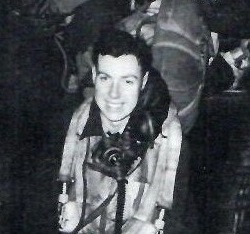
The protagonist of Moral Fibre, Kit Moran, was not typical of Bomber Command pilots -- then again, he was typical of the diversity that was so much a part of Bomber Command. Aircrew in Bomber Command came from all the colonies and former colonies, especially Canada and Australia, but including the West Indies, and it came form allied nations such as Poland, France and the United States as well. Kit was British, but his father was in the Colonial Service. He was born and raised in Africa -- South Africa, Kenya, and Nigeria. His parents met in South Africa, where his mother was the daughter of a Scottish missionary and his Zulu second wife. She was, therefore, viewed as "coloured" in South Africa, despite her British passport. Kit grew up in the ambivalent situation of being British, privileged and to all appearances "white" -- but not entirely.
His anticipated education in the UK was derailed by an accident leading to a financial crisis, and he therefore started his working life as an engineering apprentice in Bristol at the age of sixteen. When the war broke out, he was bored, fractious and impatient to "do" something, so he volunteered for the RAF. The recruiting sergeant looked at his engineering background and suggested he would be mustered faster if he volunteered for ground crew rather than air crew. There were so many young men who wanted to learn to fly, that it would be months before he was called up if he stuck to his original request. So, being in a hurry to leave his seemingly dull job behind, he mustered for ground crew training. After two years as an aircraft mechanic, however, he was restless and dissatisfied with letting others take the risks. He volunteered for air crew and was selected for flight engineer training.
He served a full tour as a flight engineer, earning first the Distinguished Flying Medal (DFM) and then a commission. After six months as an instructor at an Operational Training Unit (OTU), his former skipper and best friend convinced him to volunteer for a second tour and together they started it. On their sixth operational sortie, however, his skipper was killed and the following day Kit refused to fly with another pilot and crew on another raid against Berlin. In consequence, he was posted for "Lack of Moral Fibre" and sent to a psychiatric diagnostic center to determine if he had a mental health issue or should be disciplined for cowardice. What happened there is the subject of the novella Lack of Moral Fibre, which is available as a stand-alone ebook or as part of the trilogy Grounded Eagles.
Moral Fibre picks up where Lack of Moral Fibre leaves off and takes Kit to the end of his war.
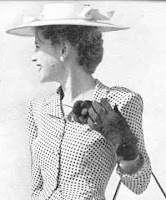 Next week I will explore the heroine: Georgina Reddings:
Next week I will explore the heroine: Georgina Reddings:
 Riding the icy, moonlit sky— They took the war to Hitler.
Riding the icy, moonlit sky— They took the war to Hitler.
Their chances of survival were less than fifty percent. Their average age was 21.
This is the story of just one Lancaster skipper, his crew,and the woman he loved.
It is intended as a tribute to them all.
Flying Officer Kit Moran has earned his pilot’s wings, but the greatest challenges still lie ahead: crewing up and returning to operations. Things aren’t made easier by the fact that while still a flight engineer, he was posted LMF (Lacking in Moral Fibre) for refusing to fly after a raid on Berlin that killed his best friend and skipper. Nor does it help that he is in love with his dead friend’s fiancé, who is not yet ready to become romantically involved again.
April 19, 2022
DISSECTION OF A NOVEL PART I: INSPIRATION
As a novelist, I have often been asked how I select the topics I write about -- and, indeed about every other aspect of writing. In response, I will dissect the key aspects of my most recent novel, Moral Fibre, using it as a case study to describe my -- highly individual -- approach to each component.
I have never been able to write a novel "on command" or "on commission," this is, because someone else thought a certain event or character would make a good novel. Nor have I ever been able to embark upon a novel based on a rational analysis of the book market or popular trends.
My novels all come from within me, and they usually start with a flash of inspiration. Many times, a visit to an historical venue has ignited my imagination. Other times, I have stumbled over a character, an event or simply a photograph quite by accident when researching something else. Whatever it is, something triggers an emotional response that transforms itself into the seed of a novel.
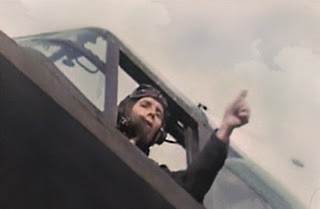
I can still vividly remember the moment that the idea for Moral Fibre overtook me. It was a winter evening. I was having a glass of wine in front of the fireplace with my husband. I had been working on a manuscript for book that paired two novellas. Each novella was too short to stand alone, but related enough to make a pairing possible. I was comfortable with the concept and pleased with what I had produced up to this point. The project was nearing completion and almost ready for the editor. Then abruptly and without any apparent catalyst, I knew that I was wrong and that a story was missing. That the two novellas were not enough, third was needed, and not just any third story but Kit's story.
At that moment, I didn't know a lot about Kit. I simply knew that he had been posted for "Lack of Moral Fibre" after refusing to fly on an operation mission to Berlin. So the next day I started researching the phenomenon of "Lack of Moral Fibre" (LMF), why, when and how it was applied. Simultaneously, I needed to research Bomber Command's offensive against Berlin. Suddenly, I was 100% into research mode, and the more I learned the more fascinated and inspired I became. There was so much material here -- drama, emotion, and meaning. Particularly attractive was the growing realization that popular images and notions were not well-aligned with the evidence presented in solid academic sources and memoirs. My novel, as so often, increasingly took on a educational dimension alongside the purely human interest aspects of the tale.
Initially, I was excited about using the novella format to approach the story in flash-backs. The idea was to start with Kit being declared "LMF" and then slowly, like peeling an onion, reveal to the reader why he had refused to fly on a certain operation in November 1943. The format, being unusual for me. was challenging and got my adrenaline going. I was so pleased with my work, I entered it in "The Page Turner" awards -- and it was long listed! I also had one test reader tell me that it was "the best book" he had read "in years. Period." I was thrilled and energized.
Meanwhile, since I was doing all this research on Bomber Command anyway, I thought I'd see if I could find a little more about my uncle Ken, who had been lost over Berlin in March 1944. When living in Berlin, I had made a point of leaving a rose on his grave in the Commonwealth War Cemetary at infrequent intervals. I did it for my uncle Jack, who had survived, more than for his elder brother, Ken, who I had never known.
My haphazard research led me to the squadron association website, and there to a documentary film that had been made a decade ago. It was called "Last Flight to Berlin" and it had been made by a professional film maker, whose father had been a pilot with Bomber Command and been killed when he was only a few months old. He had never known his father and set out to find out more about him with this film.
Easter Sunday last year (2021) I purchased the film from amazon prime and settled in to watch it on my laptop at my desk in my office. It told the story of a farm boy from Western Canada, how he volunteered for the RCAF, trained in Canada, fell in love, married. It had pictures of his honeymoon in NYC, and from his years as an instructor in Canada. Then the orders came transferring him to an operational squadron operating out of England. There he "crewed up" with six other young men. A photograph of seven young men grinning appeared on the screen and the narrator starting giving the trades and names of each one at a time. "The navigator: Ken Heaton." It was like being hit by icy lighting. It was my uncle. Of all the hundreds of crews that had flown with that one squadron, the one the film made was about was Uncle Ken's. I couldn't believe it, and it still gives me chills.
But what did this have to do with my novella? The first draft was finished. The editing was on-going. It was without doubt one of my better works. It had already garnered praise. But when I tried to sleep that night, I recognized that the novella was actually only the teaser. The real story was what happened afterwards. And the concept for Moral Fibre was born.
Next week I will explore the protagonist: Kit Moran.

Riding the icy, moonlit sky— They took the war to Hitler.
Their chances of survival were less than fifty percent. Their average age was 21.
This is the story of just one Lancaster skipper, his crew,and the woman he loved.
It is intended as a tribute to them all.
Flying Officer Kit Moran has earned his pilot’s wings, but the greatest challenges still lie ahead: crewing up and returning to operations. Things aren’t made easier by the fact that while still a flight engineer, he was posted LMF (Lacking in Moral Fibre) for refusing to fly after a raid on Berlin that killed his best friend and skipper. Nor does it help that he is in love with his dead friend’s fiancé, who is not yet ready to become romantically involved again.

